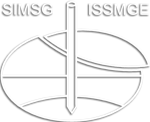Application of natural biodelignification systems in forest soil for enhanced anaerobic digestion potential of wood waste
Application of natural biodelignification systems in forest soil for enhanced anaerobic digestion potential of wood waste
Wood wastes are a valuable potential resource to produce clean and renewable biogas through anaerobic digestion. However, the high lignin content limits its potential as such a biomass resource by inhibiting its biodegradability. Efforts to enhance digestibility of such wastes have mainly focused on chemical and physical methods, although the employment of such tools can be costly and environmentally unfriendly. Forest soil ecosystems have evolved to manage fallen timber and deadwood with efficient processes brought about by a range of organisms including fungi, bacteria, and insects. We propose that such systems are feasible for pre-treatment of lignocellulosic waste and improvement of biogas production during anaerobic digestion. In this paper, we describe the collection and analysis of wood obtained from a semi-natural woodland floor. These samples were characterized and classified into one of five decay classes through a range of chemical and physical analyses including total solids, volatile solids, total organic carbon, carbon to nitrogen ratio, and lignocellulose content. Finally, biomethane potential tests were carried out to determine the effect of reduction of wood particle size, as a proxy for one of the effects of timber biodegradation, on the potential for enhanced biogas production. The outcomes are instructive in exploring the potential for nature-based pre-treatment of lignocellulosic wastes to render them more amenable to anaerobic digestion, which has the potential to make available significant new waste feedstocks (e.g., forestry waste) for biogas and energy generation.
Z. Gao; S. Muaaz-Us-Salam; D. Sapsford; P. Cleall; M. Harbottle
9th International Congress on Environmental Geotechnics (ICEG2023)
Biogeotechnics and Bioremediation
https://doi.org/10.53243/ICEG2023-59
